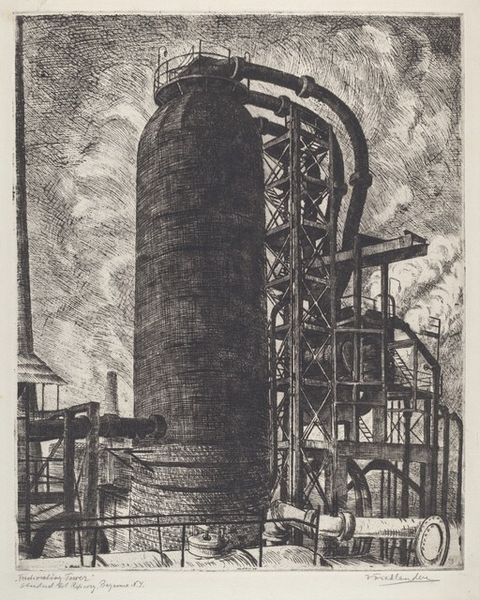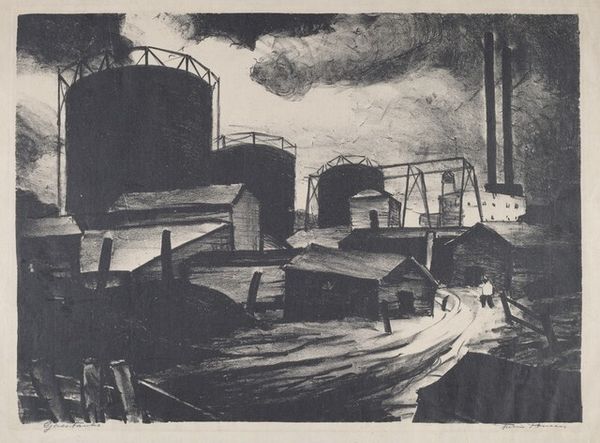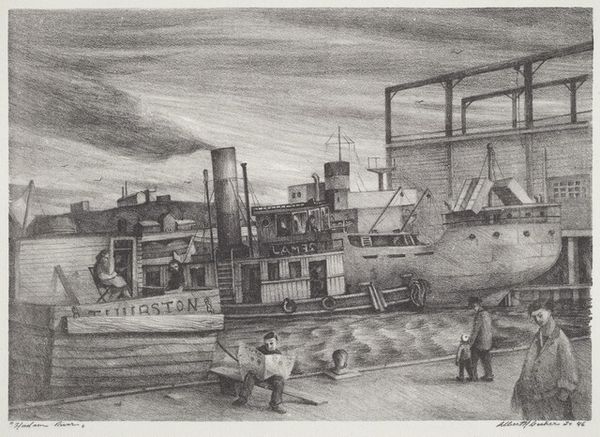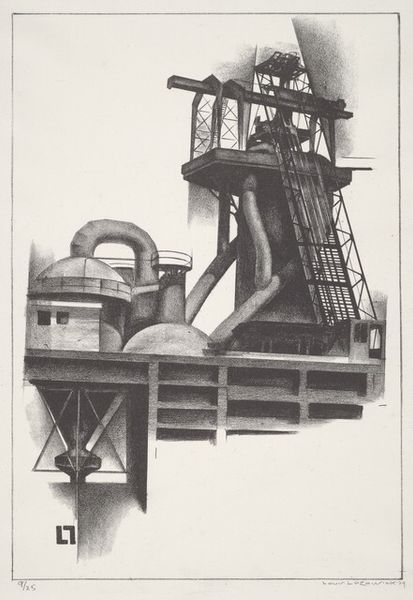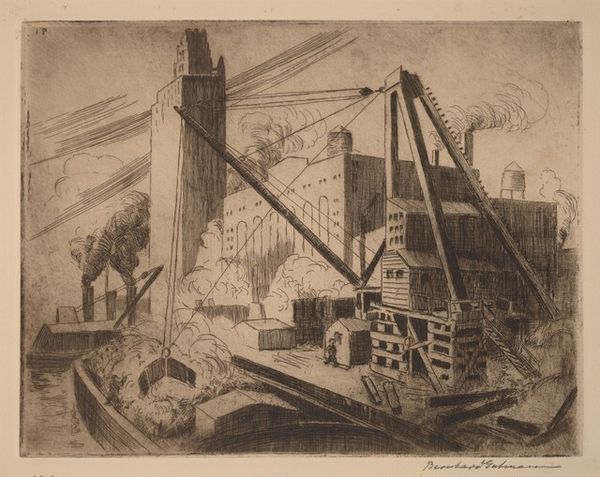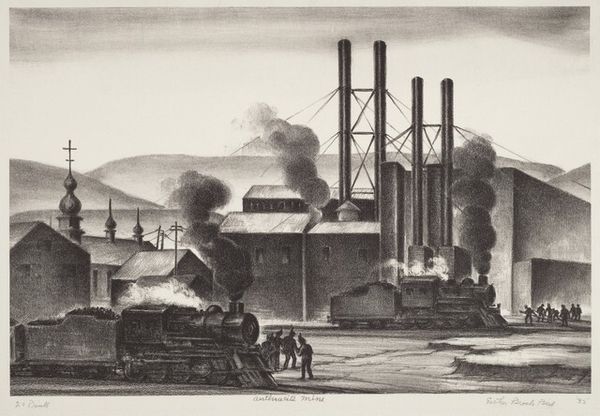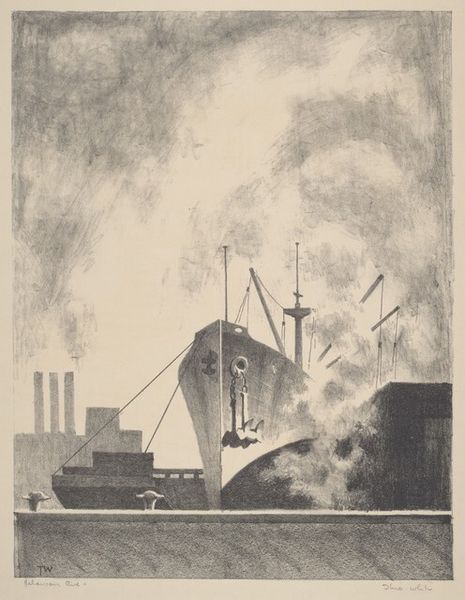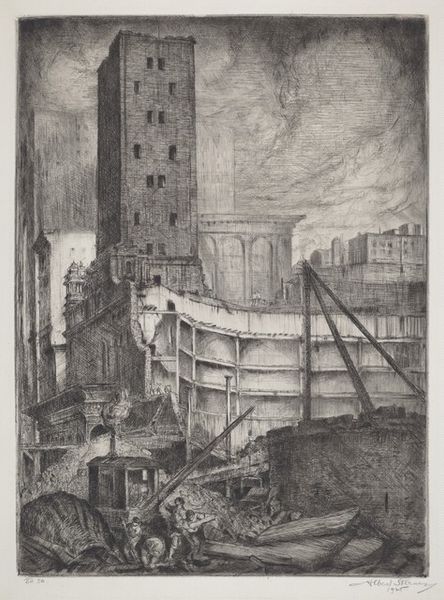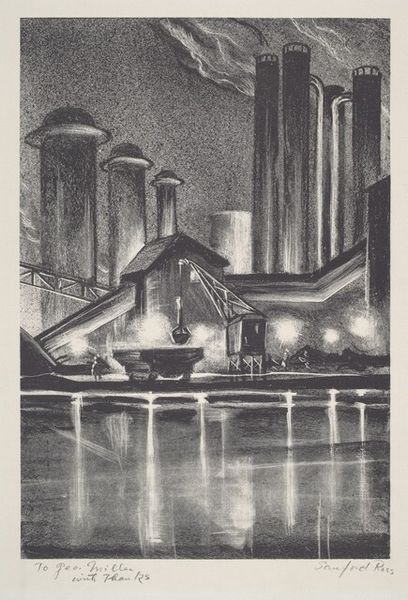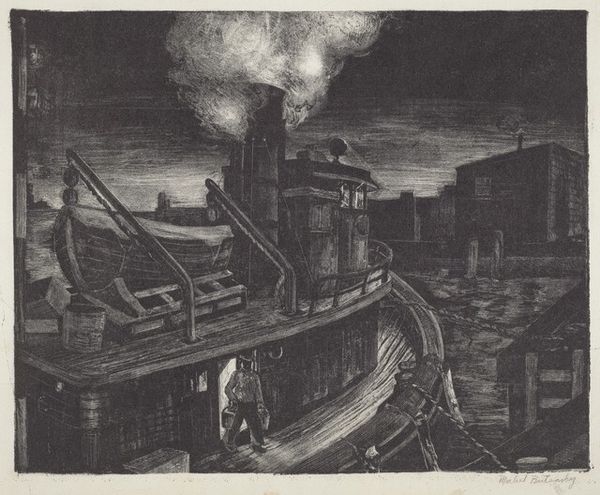
graphic-art, print, etching
#
art-deco
#
graphic-art
# print
#
etching
#
cityscape
#
regionalism
#
realism
Dimensions: image: 274 x 213 mm sheet: 370 x 280 mm
Copyright: National Gallery of Art: CC0 1.0
Curator: Looking at William Sharp’s etching, Railroad Yards West Chicago Avenue, dating from around 1935, what immediately strikes you? Editor: The oppressive stillness. It's a cityscape, but absent the vibrancy of a working city. There's an almost ominous quality to the muted grays and looming industrial forms. Curator: Ominous, yes, but I also see the optimism inherent in depicting such a modern scene. Trains represent connection, possibility, even power. What symbols do you notice recurring in the industrial iconography of the era? Editor: I see a society on the brink. You're right; trains embody connection, but who is connected, and at what cost? Note how the figures are diminished, almost faceless, pressed against the lower right. Curator: The two men, are they observing or are they part of the scene? Perhaps both. The artist could be presenting humanity and progress inextricably intertwined. This sort of representation helped shape public sentiment, didn't it? Editor: Absolutely. Artists like Sharp, while aligned with Regionalism's celebration of American life, still operate within power dynamics. Whose story gets told, and from what vantage point? This romanticized view of industrial labor conveniently overlooks issues of exploitation and class division. Curator: Perhaps. Yet, it also serves as a testament to the scale of human accomplishment, doesn't it? The etching's composition, the carefully arranged planes and textures, evoke a sense of both awe and melancholy. And in art deco fashion it uses simple shapes to capture the subject. Editor: A melancholy perhaps born of its context within the Great Depression. To me, this scene speaks of a broken social contract, masked by clean lines. It is both a chronicle and a critique. Curator: It's interesting how the piece, with its heavy contrasts, almost mirrors the debates that were unfolding then, between utopian ideals and harsher realities. Editor: Agreed. And that duality still resonates deeply, compelling us to constantly interrogate the narratives embedded within seemingly simple representations of everyday life. Curator: Yes. By engaging with such potent images, we confront our present as a continuum of choices made in the past. Editor: Indeed, it compels a constant reevaluation. It seems that no matter the aesthetic, context always is what matters.
Comments
No comments
Be the first to comment and join the conversation on the ultimate creative platform.
